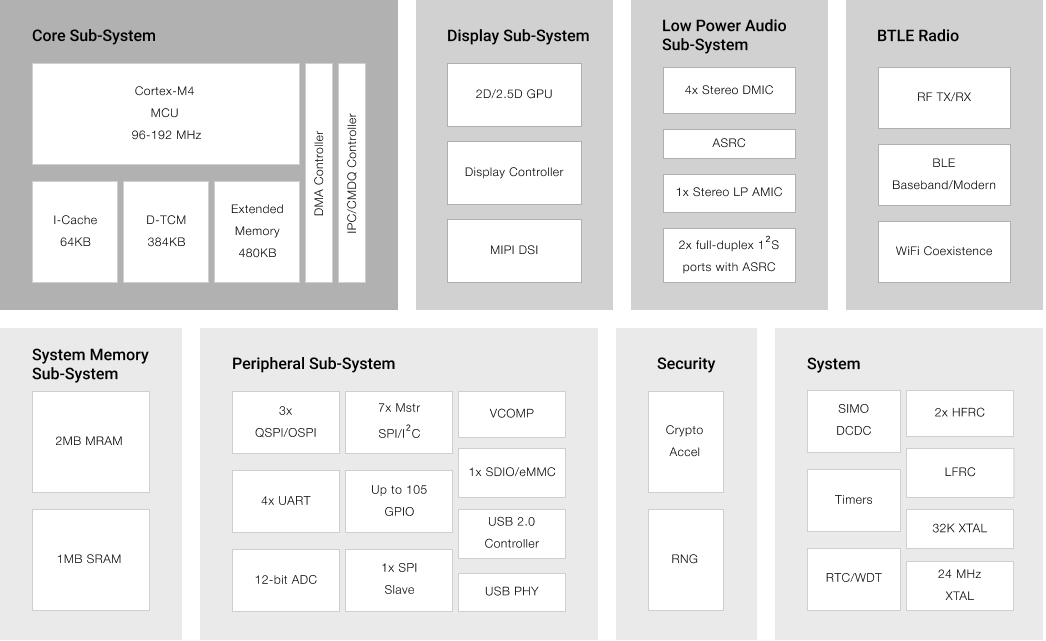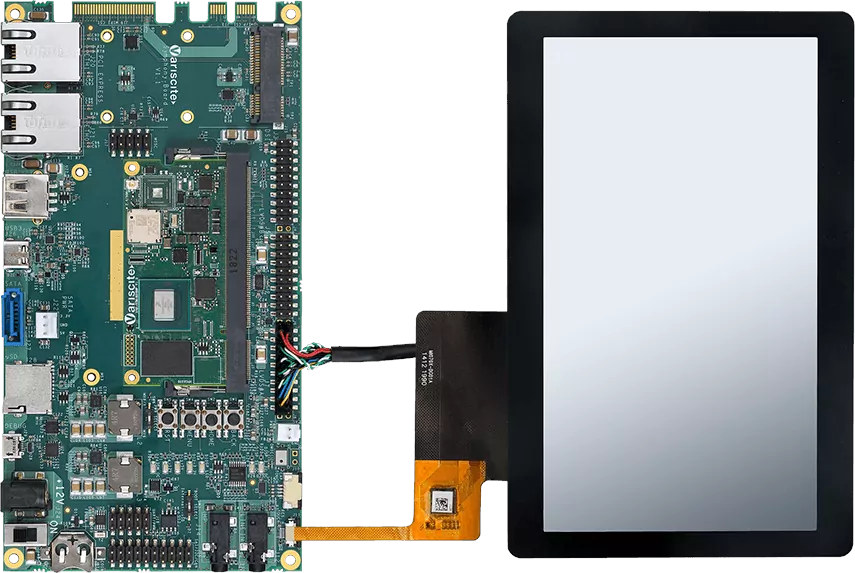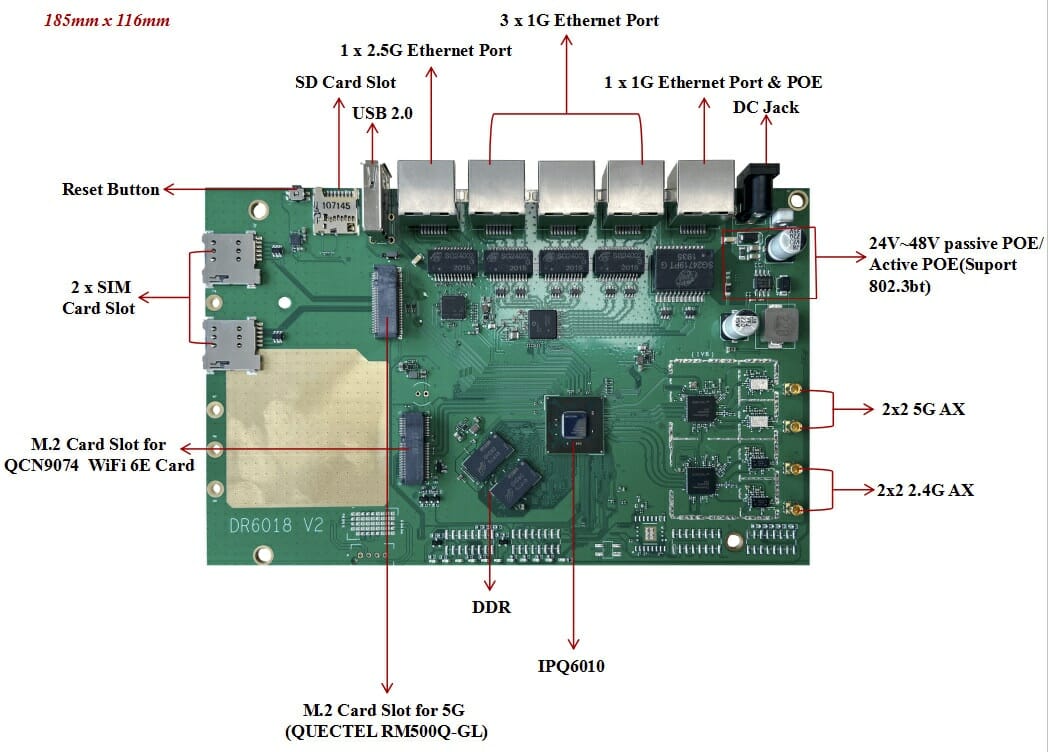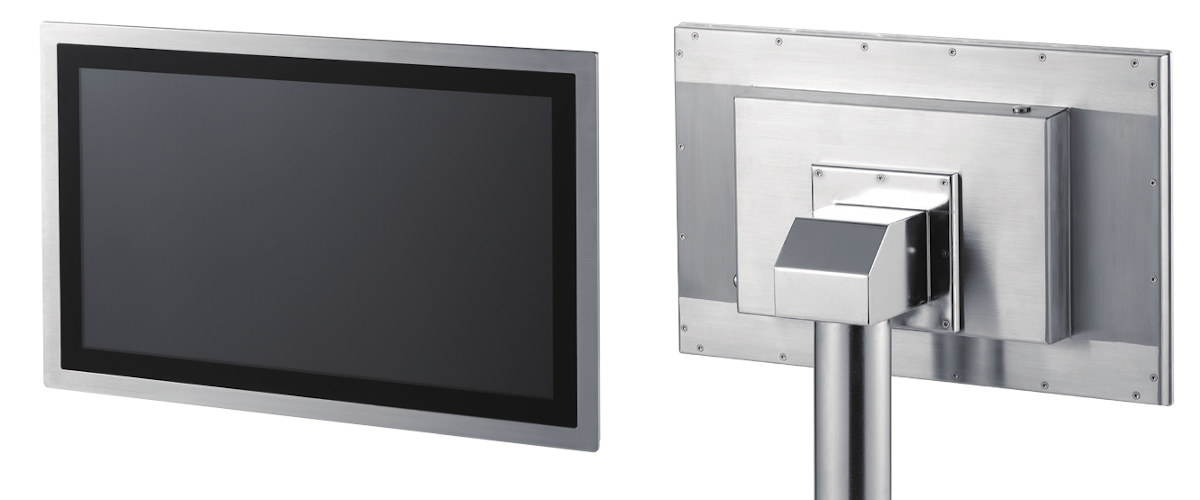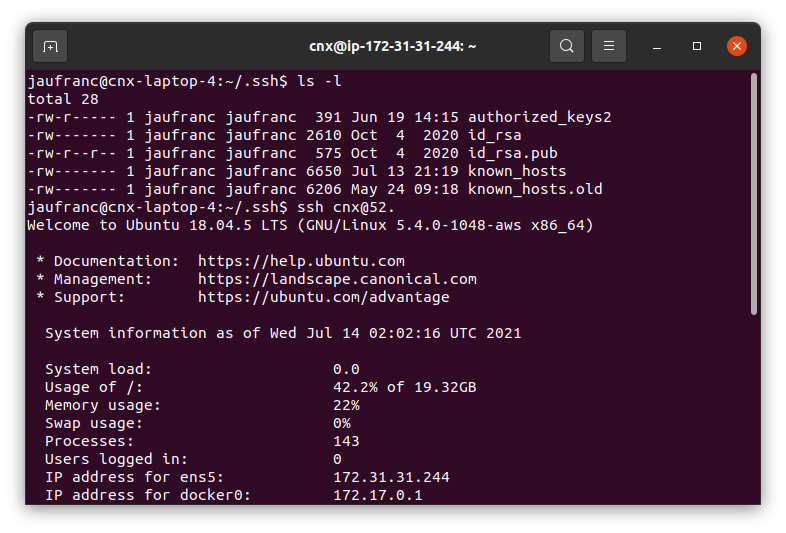Most GPU drivers found in Arm processors are known to be closed-source making it difficult and time-consuming to fix some of the bugs since everybody needs to rely on the silicon vendor to fix those for them, and they may even decide a particular bug is not important to them, so you’d be out of luck. So the developer community has long tried to reverse-engineer GPU drivers with projects like Freedreno (Qualcomm Adreno), Etnaviv (Vivante), as well as Lima and Panfrost for Arm Mali GPUs. Several years ago, Arm management was not interested at all collaborating with open-source GPU driver development for Mali GPUs, but as noted by Phoronix, Alyssa Rosenzweig, a graphics software engineer employed by Collabora, explained Panfrost development was now done in partnership with Arm during a talk at the annual X.Org Developers’ Conference (XDC 2020). A recent merge commit confirms the move with Daniel Stone, Graphics […]
3µA/MHz Ambiq Apollo 4 MCU Targets Battery-powered IoT Devices with Voice Processing
Ambiq Micro is using sub-threshold voltages under 0.5V to offer ultra-low-power Arm microcontrollers. In 2015, the company launch the Apollo Cortex-M4F MCU with 30µA/MHz power consumption in active mode, which was followed in 2016 by Apollo 2 in consuming just 10µA/MHz, and Apollo 3 (Blue) dropped power consumption to as low as 6µA/MHz against using a Cortex-M4F @ 48 MHz in active mode. The fourth generation of ultra-low-power Apollo microcontroller has now been announced with Apollo 4 and Apollo 4 Blue microcontrollers – the latter adding Bluetooth – halving the power consumption of Apollo 3 at just 3µA/MHz, or ten times less than the original ultra-low-power MCU from the company. Apollo 4 (Blue) specifications and key features: MCU Core – Arm Cortex-M4F core up to 192 MHz (TurboSPOT) with FPU, Memory Protection Unit (MPU), and Secure Boot GPU – 2D/2.5D graphics accelerator with full alpha blending, texture and frame buffer […]
Facebook Introduces Oculus Quest 2 Standalone VR headset Powered by Snapdragon XR2 SoC
Virtual reality headsets used to have to be connected to computers for optimal performance while gaming, and several years ago, most standalone VR headsets were only good to play some videos. But technology has evolved, and with the launch of Snapdragon XR2 powered Oculus Quest 2 standalone VR headset available for pre-order for $299, Facebook has decided to completely leave the PC-only VR headset business. Oculus Quest 2 specifications: SoC – Qualcomm Snapdragon XR2 platform with AI acceleration capability similar to Snapdragon 865 System Memory – 6GB RAM Storage – 64GB or 256GB flash Display Dual 1832 x 1920 pixel (per eye) display @ 90 Hz IPD Adjustment – 58mm, 63mm or 68mm Audio Integrated speakers and microphone, 3.5 mm audio jack Connectivity – WiFi, Bluetooth (but no audio support due to latency) Tracking Technology – Oculus Insight inside-out 6-DoF tracking with motion controllers USB – USB-C cable for charging […]
NXP i.MX 8M Plus AI Systems-on-Modules and Devkits Launched by Variscite
NXP i.MX 8M Plus processor was unveiled at the very beginning of the year as the first i.MX processor with AI hardware acceleration provided by a 2.3 TOPS Neural Processing Unit (NPU) embedded in the chip. Apart from the upcoming Wandboard 8MPLUS SBC, we had not seen hardware powered by the new processor, but Variscite has now announced two NXP i.MX 8M Plus systems-on-modules – VAR-SOM-MX8M-PLUS and DART-MX8M-PLUS – and corresponding development kits. VAR-SOM-MX8M-PLUS CPU Module & Development Kit Specifications: SoC – NXP i.MX 8M Plus single, dual or quad-core Cortex-A53 processor clocked at up to 1.6 (Industrial/Extended) or 1.8GHz (Commercial), Cortex-M7 real-time core @ 800 MHz, 1080p H265/H264 encode/decode, AI/ML acceleration up to 2.3 TOPS, GC7000UL 3D GPU, GC520L 2D GPU System Memory – 1 to 4GB LPDDR4 Storage – 8 to 64GB eMMC flash Networking – 802.11 ac/a/b/g/n + BT 4.2/BLE module SO-DIMM Edge Connector Storage I/F – […]
DR6018 V2 Embedded WiFi 6 Router Board Adds Support for WiFi 6E and 5G IoT M.2 Cards
A few months ago we covered DR6018 (aka CP01) WiFi 6 Embedded SBC powered by Qualcomm IPQ6018 processor and offering six Ethernet ports including five Gigabit interfaces and one 2.5 Gbps Ethernet port. Wallys Communications has now informed CNX Software they had a new version of the board called DR6018 V2 with a more compact form factor, support for PoE, as well as optional WiFi 6E and 5G IoT M.2 modules. DR6018 V2 board specifications: SoC – Qualcomm Atheros IPQ6010 quad-core Arm Cortex-A53 processor @ 1.8 GHz System Memory – 1GB (2x 512MB) DDR3L 16-bit interface with 32-bit memory bus design Storage – 256MB NAND Flash, 32MB NOR flash, SD card slot Networking Wired 3x Gigabit Ethernet ports (one less compared to DR6018) 1x Gigabit Ethernet port with PoE support 1x 2.5Gbps Ethernet port Wireless WiFi 2×2 2.4GHz MU-MIMO OFDMA 802.11b/g/n/ax WiFi 6, max 23dBm per chain 2×2 5GHz MU-MIMO […]
IP69K-Rated Stainless Steel Panel PCs Run Windows 10 or Ubuntu 16.04
There are already several industrial dust and waterproof panel PCs on the market, but with its Intel Apollo Lake powered Titan-AL Series, ADLINK goes a step further with IP69K-rated stainless steel panel PCs that provide resistance against corrosion from all sort of chemicals. Titan-AL series panel PCs can be washed with high-pressure water or steam to meet high-hygiene standards required in special production environments including food, pharmaceutical, and chemical production. ADLINK Titan-AL series panel PC specifications: SoC – Intel Atom x7-E3950 quad-core Apollo Lake processor @ 1.60 GHz / 2.00 GHz (Boost) with Intel HD Graphics 505; 12W TDP System Memory – 4GB DDR3L default (up to 8GB) Storage – 2.5″ SATA drive bay Available Displays Configurations Titan-15W-AL – 15.6-inch display with 1366 x 768 resolution, optional capacitive touchscreen; viewing angle: 80/80/85/85° (U/D/R/L) Titan-21W-AL – 21.5-inch display with 1920 x 1080 resolution, optional capacitive touchscreen; viewing angle: 89° in all […]
Pinephone Multiboot Image Boots 13 Different Linux Distributions
You’ve certainly heard about dual-boot systems with Windows and Linux, and possibly about triple-boot systems with an extra OS like Chromium OS or Android, but pine64’s forum user Megous has gone much further with a multiboot image for Pinephone able to boot 13 different Linux distributions! You’d think the image would occupy a lot of space on the device, but since all 13 distributions share the same Linux 5.9 kernel, all 13 operating systems fit on the internal eMMC flash or a MicroSD card with 8GB or greater capacity. The image is based on the p-boot bootloader allowing you to select the distribution of your choice and supports all PinePhones from the Braveheart Edition to the most recent revisions with 3GB RAM and 32GB storage. So what Linux distributions are supported by the multiboot image exactly? Here’s the list: Arch Linux Arm 2020-09-08 Lune OS 0.113 Maemo Leste 20200906 Mobian […]
No password SSH – Login to a SSH server with private/public keys
If you often need to establish SSH connections to a server, entering the password each time may be a hassle or even a non-starter. For example, in our case, we use ssh connections in our nightly build scripts, so obviously entering a password would not be an option here… So it can be useful to configure the server and your client to accept secure ssh connection without the need to enter a password. What must be done, then, is to generate a public/private key pair, and copy the public part into the appropriate place on the server side. For doing this, on the user’s home directory, on the client machine, type:
|
1 |
local> ssh-keygen -t rsa -f ~/.ssh/id_rsa |
-t tells the type of encryption -f tells where to store the public/private key pairs. In this case, the .ssh directory in the home directory is being used A password will be asked; leave this part blank, just […]



